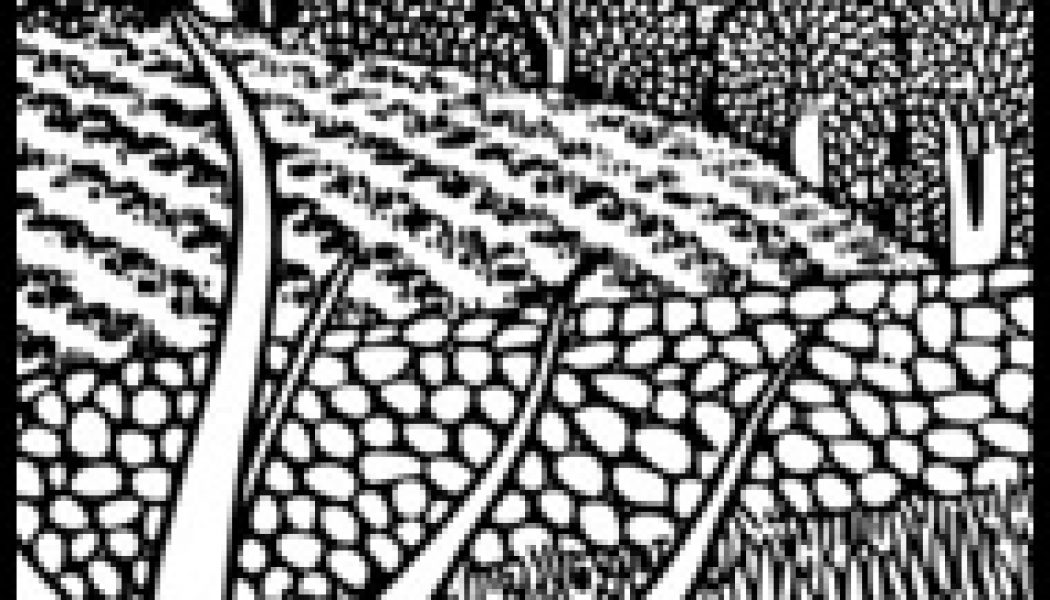We have grown a wild variety of plants and animals in our stumbling attempt at farming, and have seen and talked to people coming and going in this wild world of agrarianism. I think I can safely say that I’ve made more mistakes than successes, but I’ve certainly learned a lot through them. As I’ve heard it said – failure is compost if you know what to do with it. So, with my failures and experience in mind, here are my seven tips for those of you just getting started in homesteading:
1. Find mentors.
Don’t spend a bunch of time looking at websites and magazines like “Mother Earth News” – they’re selling advertising, not worthwhile information. It’s sort of like those magazines in the grocery aisle that have an article about “best lovin’ ever” every single month. The wannabe farmer magazines just print pictures of unrealistic and pretty gardens and rolling pastures and say basically the same stuff over and over, just as Cosmopolitan says the same thing over and over again with pretty and unrealistic pictures. Don’t window shop and compare yourself to impossible ideals, but go find someone to learn from! Even if you drive a couple hours and spend a day walking around a homestead or farm, you’ll learn more than staying up too late googling. Overdoing the “research” part of homesteading can become a paradoxical addiction – spending too much time inside and behind screens reading about being outside in front of reality. Visiting might also make you realize that, hey, you don’t want to homestead – and that’s just fine. You can find other ways to avoid consumerism and enjoy life.
2. Don’t get weird about it.
Don’t do a massive pendulum swing from Walmart shopper to Amish yeoman. Start slow. If you do you will be less likely to get discouraged by failure and feel embarrassed when you give up and see your friends at Walmart. Do it because it’s good, not as sheer reaction – or to “prep” for disasters. It will also help if you simply describe the good experiences of your homesteading instead of the errors of the modern system they are part of (oops – is that how I started this article?). In short: just homestead for a while before grandstanding to the world. It is good, and that’s reason enough.
3. Don’t grow exotic things – stick to the classics.
There’s a reason every old farm picture has chickens, cows, and pigs – these things produce food! However, pigs and cows (dairy or beef), and not chickens, will be your best bet. They produce an actual abundance of food that can really feed a family. Chickens are actually very hard to make sense of – after feed and other expenses you don’t really do any better than just buying eggs. But, the act of caring for them is good, and you can use them to help with other farm aspects (which is the next point). And, as chicken owners will tell you, they are extremely entertaining. The same is true for sticking with classic vegetables. Your family can grow and will likely enjoy squash, tomatoes, beans, potatoes, and other classics much more than obscure and eccentric plants. These classics also tend to have varieties that are hardy and more forgiving. At first, grow corn and pigs, not bok choy and llamas, no matter what Mother Earth News or the Farmers’ Almanac (or Hearth & Field) said in their latest issue.
4. Think in whole systems.
Don’t just picture your place with a cage here, pen here, and garden here. Think how they all work together, and what ways they can mutually benefit each other. Make your systems versatile and movable. And ask first what the land would like to do, not what you can force it to do. I have pigs under oak trees to eat the acorns next to the cows’ barn so they can drink spoiled or waste from dairying; and both of them are above a pasture and garden space, so that their nutrients flow into that area and fertilize it with gravity and rain. I also use pigs to till my garden spaces and clean out areas in general. On a smaller scale you might consider having chickens or compost piles on top of future garden spaces so that when you move them, you have more fertile ground to work with. On a small scale, books in the “permaculture” style of farming will be the most helpful.
5. Never have naked soil.

 The number one mistake I see is that people till up huge spaces on a warm Saturday before they really have a plan or experience in gardening on a scale bigger than a pot. No really – this happens all the time. First of all, I use tilling and layering techniques that make for better soil, less work, and more fertility (it’s not the only way, but it works very well). Nature never allows soil to be bare because it will wash away, compact, and lose fertility fast. That’s why when you till, all sorts of new weeds pop up. They are trying to cover that naked ground fast, doing exactly what they were designed to do. There are no weeds in the forest where old leaves keep the floor mulched, but the weed seeds are there in dormancy in case they are ever needed. Imitate the forest. Keep your ground covered in mulch or cover crops and only disturb it for really good reasons. I use cardboard and straw (not hay) as mulch, and then pile up manure and compost on top of that, maybe some leaves, then add more straw. I usually do this in the wintertime so that come spring the worms have “tilled” the soil, cardboard, and compost altogether and the weed seeds are eight inches underground instead of on top and ready to sprout when you water those new lettuce seeds. If you want a new garden space fast, put down a layer of cardboard and a load of compost and let it sit for a while, then work up small areas right where you are planting (leave the rest as mulch and future soil), then plant and mulch with straw.
The number one mistake I see is that people till up huge spaces on a warm Saturday before they really have a plan or experience in gardening on a scale bigger than a pot. No really – this happens all the time. First of all, I use tilling and layering techniques that make for better soil, less work, and more fertility (it’s not the only way, but it works very well). Nature never allows soil to be bare because it will wash away, compact, and lose fertility fast. That’s why when you till, all sorts of new weeds pop up. They are trying to cover that naked ground fast, doing exactly what they were designed to do. There are no weeds in the forest where old leaves keep the floor mulched, but the weed seeds are there in dormancy in case they are ever needed. Imitate the forest. Keep your ground covered in mulch or cover crops and only disturb it for really good reasons. I use cardboard and straw (not hay) as mulch, and then pile up manure and compost on top of that, maybe some leaves, then add more straw. I usually do this in the wintertime so that come spring the worms have “tilled” the soil, cardboard, and compost altogether and the weed seeds are eight inches underground instead of on top and ready to sprout when you water those new lettuce seeds. If you want a new garden space fast, put down a layer of cardboard and a load of compost and let it sit for a while, then work up small areas right where you are planting (leave the rest as mulch and future soil), then plant and mulch with straw.
6. Compost is not optional.
Whether you make it or just buy it, investing in soil fertility is an investment that will actually come back. Don’t overdo it with the seed catalogue and dream up an acre garden before you have the soil to support it. Also, don’t buy ten flats of plants on a whim while you’re running errands before the soil is prepared at home. Soil is a whole system in itself and has more going on than anything else on the farm, from bacteria to minerals – and your homestead needs as many things living and dying in there as possible. Soil is not just a support for the roots of plants, it is where your food begins. Learn about soil before anything else.
7. Start.
I’ve wanted to have a small dairy for many years now. When I first moved to the country I was hounding a mentor – “Teach me how to take care of cows!” He didn’t know exactly what to tell me, but was clearly tired of the talk. “Just get a cow, Jason.” So, I got a cow. I started. You don’t have to go from couch potato to potato farmer to receive the blessings of homesteading. You can grow a tomato vine on the patio in a pot, but the simple act and experience will get you going in that direction. Even if your first tomato dies, put it in the compost pile and start again! Hey, maybe you just don’t like homesteading and decide to try brewing beer at home instead – that’s still human culture! If so, come on over and we’ll barter our goods, and enjoy the fruits of the earth and the work of human hands. All without being subject to the frailties of an overburdened supply chain or increasing the GDP.








